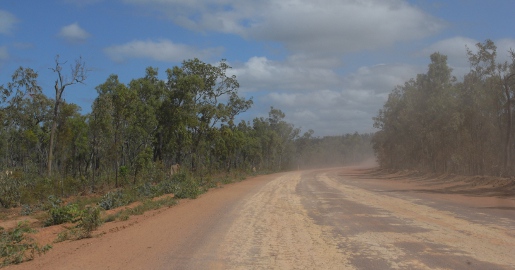Cape York, Australia

Cape York Peninsula is a large remote peninsula located in far north-eastern Australia, and is notable as a (relatively) unspoilt wilderness area – the largest in Australia and of global environmental significance for the diversity of habitats and species found there. Cape York Peninsula was traditionally home to 40 or so distinct languages (often comprised of a number of dialects and registers) of the Pama-Nyungan persuasion – thus, languages of this region group with the main phylic classification of Australian languages. Some Cape York languages are noted for unusual features within the Pama-Nyungan phylum, particularly for deviant phonological features.
I primarily work on two mutually intelligible dialects, Umpila and Kuuku Ya'u, from a dialect group traditionally spoken on the north-east coast of the Cape. This language is moribund with only a handful of elderly speakers remaining today. Most of these speakers reside in Lockhart River Aboriginal Community, where the vernacular language is an English-lexifier creole. Formerly, the Umpila and Kuuku Ya'u people were semi-nomadic hunter-gatherers. Their settlement and movement patterns were seasonal, based on weather conditions and seasonal food supplies, with preferred habitats for dry and wet season camps.
My research on Umpila and Kuuku Ya'u includes general linguistic and anthropological documentation and description, as well as specific areas of investigation, such as, grammar-discourse interactions (e.g. in reference formulation) and semantic typology. Researcher:Clair Hill
I primarily work on two mutually intelligible dialects, Umpila and Kuuku Ya'u, from a dialect group traditionally spoken on the north-east coast of the Cape. This language is moribund with only a handful of elderly speakers remaining today. Most of these speakers reside in Lockhart River Aboriginal Community, where the vernacular language is an English-lexifier creole. Formerly, the Umpila and Kuuku Ya'u people were semi-nomadic hunter-gatherers. Their settlement and movement patterns were seasonal, based on weather conditions and seasonal food supplies, with preferred habitats for dry and wet season camps.
My research on Umpila and Kuuku Ya'u includes general linguistic and anthropological documentation and description, as well as specific areas of investigation, such as, grammar-discourse interactions (e.g. in reference formulation) and semantic typology. Researcher:Clair Hill

